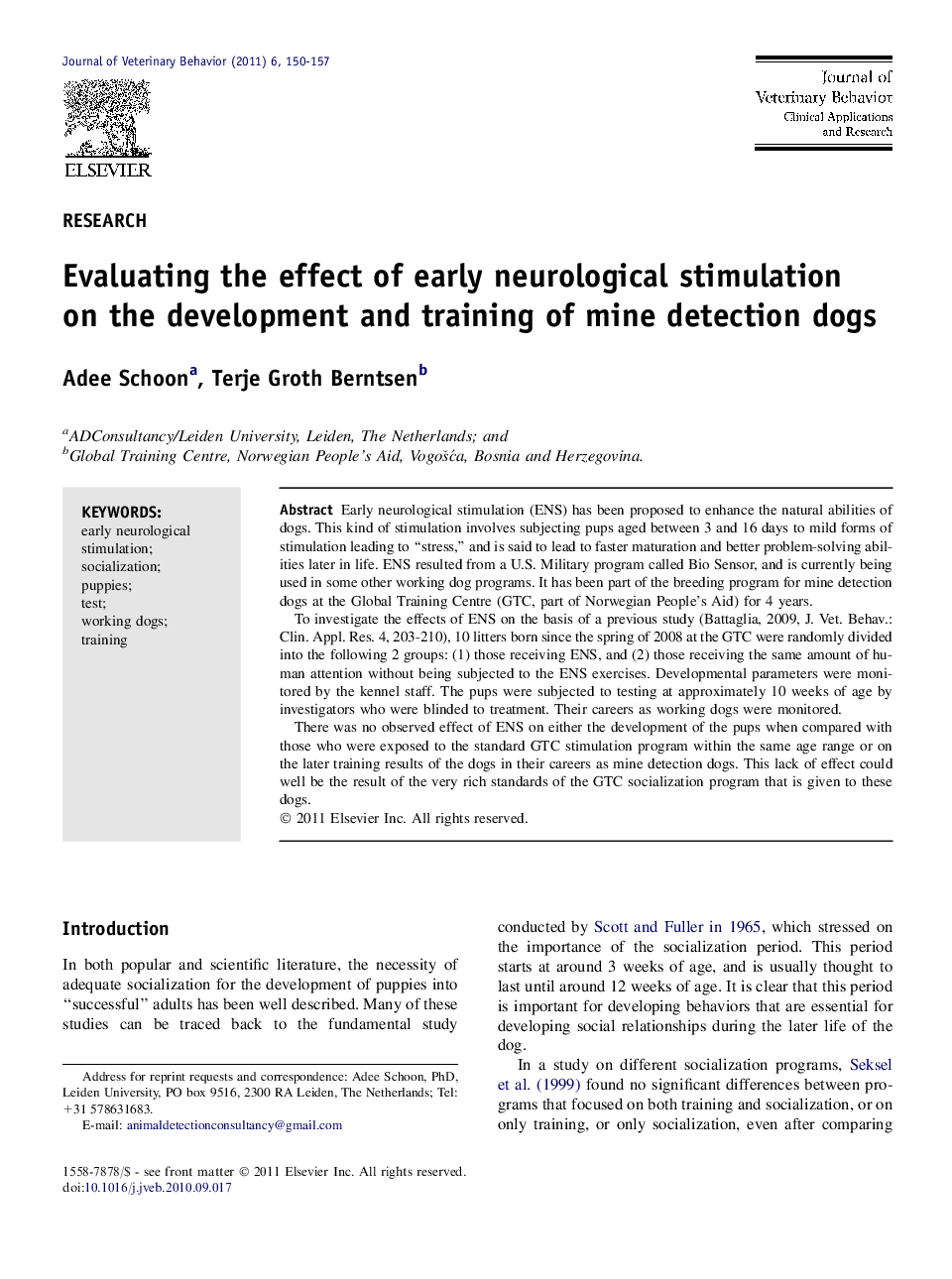| کد مقاله | کد نشریه | سال انتشار | مقاله انگلیسی | نسخه تمام متن |
|---|---|---|---|---|
| 2398907 | 1102025 | 2011 | 8 صفحه PDF | دانلود رایگان |

Early neurological stimulation (ENS) has been proposed to enhance the natural abilities of dogs. This kind of stimulation involves subjecting pups aged between 3 and 16 days to mild forms of stimulation leading to “stress,” and is said to lead to faster maturation and better problem-solving abilities later in life. ENS resulted from a U.S. Military program called Bio Sensor, and is currently being used in some other working dog programs. It has been part of the breeding program for mine detection dogs at the Global Training Centre (GTC, part of Norwegian People’s Aid) for 4 years.To investigate the effects of ENS on the basis of a previous study (Battaglia, 2009, J. Vet. Behav.: Clin. Appl. Res. 4, 203-210), 10 litters born since the spring of 2008 at the GTC were randomly divided into the following 2 groups: (1) those receiving ENS, and (2) those receiving the same amount of human attention without being subjected to the ENS exercises. Developmental parameters were monitored by the kennel staff. The pups were subjected to testing at approximately 10 weeks of age by investigators who were blinded to treatment. Their careers as working dogs were monitored.There was no observed effect of ENS on either the development of the pups when compared with those who were exposed to the standard GTC stimulation program within the same age range or on the later training results of the dogs in their careers as mine detection dogs. This lack of effect could well be the result of the very rich standards of the GTC socialization program that is given to these dogs.
Journal: Journal of Veterinary Behavior: Clinical Applications and Research - Volume 6, Issue 2, March–April 2011, Pages 150–157